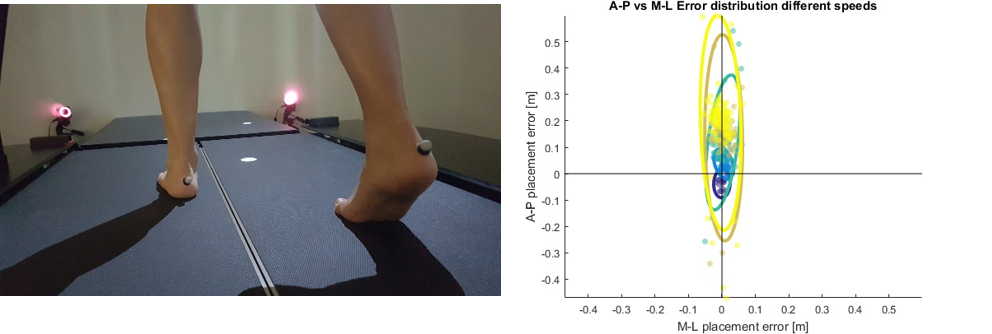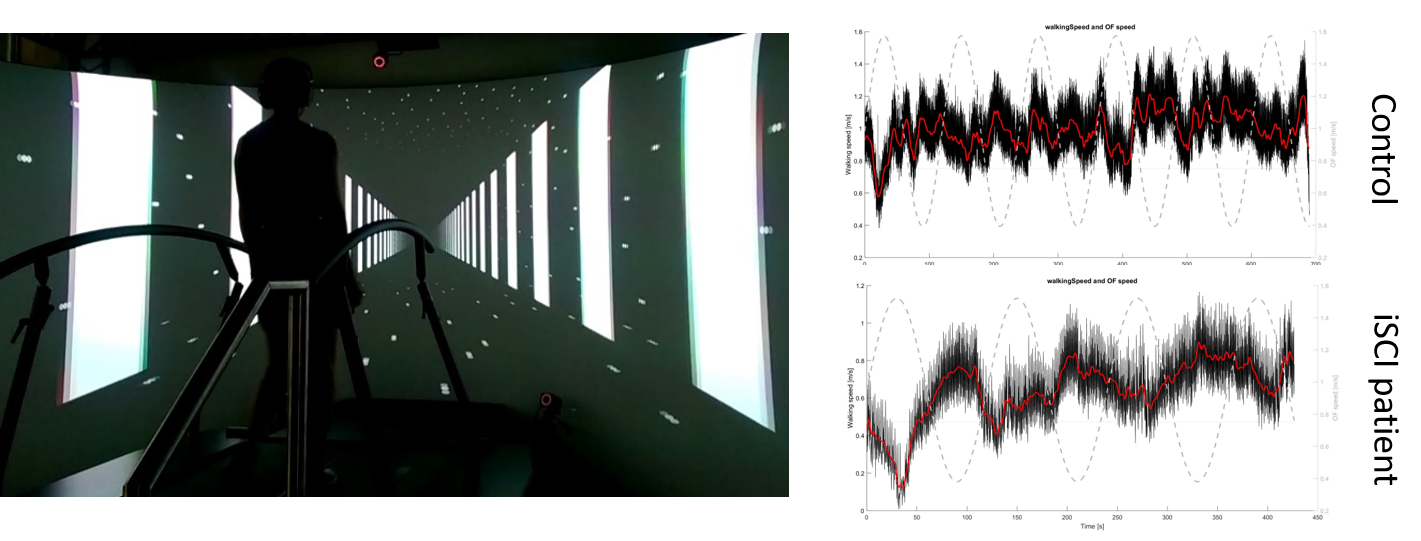Navigation auf uzh.ch
Navigation auf uzh.ch

Focus and motivation
Within the GRAIL-Lab of the Spinal Cord Injury Center at the Balgrist University Hospital, we are interested in probing the modular nature of gait in response to modified environmental stimuli. In healthy subjects and patients with spinal cord injury, we leverage various technologies to selectively boost or impair different sensorimotor systems with the goal of mapping the relative contributions of each system to walking. By selecting different locomotor conditions, we are able to place various sensorimotor demands (i.e. focusing on balance, coordination, force) to challenge individuals with differential impairment profiles. Subjects can be confronted with different biomechanical perturbations and cognitive dual tasks enabling us to model realistic situations that are encountered in everyday life (e.g. standing in a bus, walking in busy places). The GRAIL-system is equipped with state-of-the-art instrumented technologies that facilitate a highly-sensitive assessment of locomotor function. Thus, movement analysis in the GRAIL-system will result in fine-grained impairment profiles of patients’ locomotor capacities that, in turn, can be targeted by tailored intervention strategies.
Technology
The GRAIL-Lab of the Balgrist University Hospital is based around a high-performance dual-belt treadmill mounted on a motion base that enables the treadmill to move in three different dimensions. Motion analysis is conducted via a 10-camera Vicon passive optical motion capture system, two force plates integrated into the treadmill and a 16-channel wireless EMG system. A virtual environment is provided through an immersive semicircular screen and floor projection. All components are connected through a quasi-real-time software which allows simultaneous acquisition of data streams and the exchange of rich control parameters. Furthermore, the system allows quasi-real-time integration of virtually any device that possesses a data streaming capacity and/or control input interface. The GRAIL-system enables to challenge individuals through standardized perturbations and cognitive dual tasks, thus mimicking situations in everyday life.

Research Projects
Current research projects focus on the neural mechanisms underlying movement control in healthy and disease, on the development of surrogate biomarkers for locomotor therapy, and on the development and assessment of novel strategies for movement rehabilitation. The GRAIL-System can be used in the framework of the Swiss Center for Clinical Movement Analysis (https://www.balgristcampus.ch/scma).

For more information
Please contact: Dr. Linard Filli